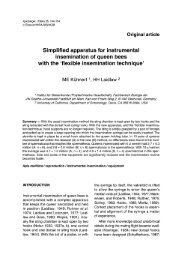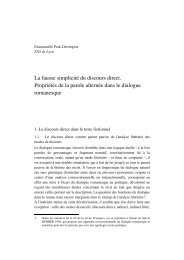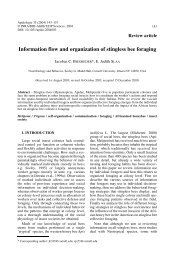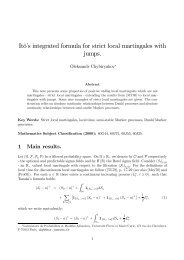ARBEITSGEMEINSCHAFT DER INSTITUTE FÜR ... - HAL - INRIA
ARBEITSGEMEINSCHAFT DER INSTITUTE FÜR ... - HAL - INRIA
ARBEITSGEMEINSCHAFT DER INSTITUTE FÜR ... - HAL - INRIA
Create successful ePaper yourself
Turn your PDF publications into a flip-book with our unique Google optimized e-Paper software.
ginnen lassen zusätzlich rezessive Mutationen erkennen. Rezessive Mutationen<br />
zeigten sich bei den Linien, die mit flügelveränderten Drohnen besamt wurden.<br />
Unter den Nachkommen waren bis zu 37 % Drohnen vorhanden, die gleiche<br />
Veränderungen wie die ursprünglich ausgewählten Drohnen aufwiesen.<br />
Im Unterschied zu den Flügelmutationen waren die Antennenveränderungen<br />
offenbar nicht vererbbar, kein Nachkomme war mutiert. Jedoch wurde hier<br />
nur eine Linie getestet, während bei den Flügelmutanten 5 Linien vorhanden<br />
waren.<br />
Die Ergebnisse zeigen, daß es mit Hilfe von röntgenbestrahlten Königinnen<br />
und der beschriebenen Kreuzungen möglich ist, rezessive Mutanten bei Bienen<br />
zu erzeugen.<br />
SUMMARY<br />
Production of mutant drones by treatment with EMS and X-rays in honeybees<br />
Drone-breeding queens were either subjected to 3 different doses of ethylmethanesulfonate<br />
(EMS) (10 nl, 1 nl, 0.1 nl) or to X-rays (500 R, 1000 R,<br />
2000 R). Except for the queens treated with 2000 R all queens produced drones.<br />
The number of drones emerged was dosage dependent and decreased with higher<br />
doses.<br />
Drones of treated queens were inspected for clearly visible morphological<br />
changes. Changes in the wings, antennae and legs were found. A greater number<br />
of offspring of the X-ray treated queens than of the EMS treated queens showed<br />
mutations.<br />
Fort testing whether the changes were heritable, single drones of the X-ray<br />
(500 R and 1000 R) treated queens were chosen for artificial insemination of<br />
virgin queens. Larvae from these queens were later utilized to rear queens,<br />
which should be heterozygous for heritable mutations. In these queens no changes<br />
could be found. This means, that either the mutations are not heritable or that<br />
the mutations are not dominant. But the haploid drones of these queens show,<br />
whether recessive mutations are existing. Recessive mutations were found in those<br />
lines which descended from drones with changes in the wings. Up to 37 % of<br />
the offspring drones showed the same mutations as the originally chosen drones.<br />
In contrast to mutations of the wings changes in the antennae were apparently<br />
not heritable, no mutations in these offspring were found. However, only one line<br />
was tested, whereas 5 lines showing wing mutations were examined.<br />
The results show that it is possible to produce recessive mutations in<br />
bees using X-ray treated queens and by using the breeding program described.




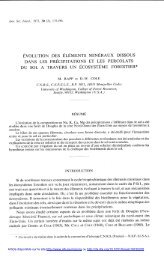
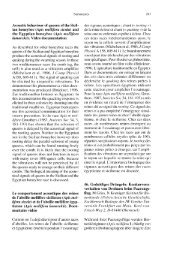
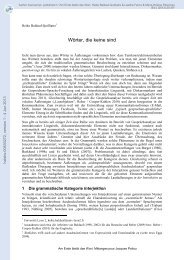
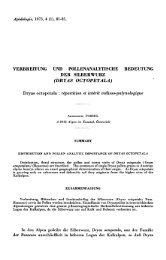
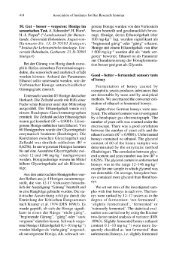
![4 C]-Polyethylenglykol bestimmt, der - HAL - INRIA](https://img.yumpu.com/22454280/1/177x260/4-c-polyethylenglykol-bestimmt-der-hal-inria.jpg?quality=85)
